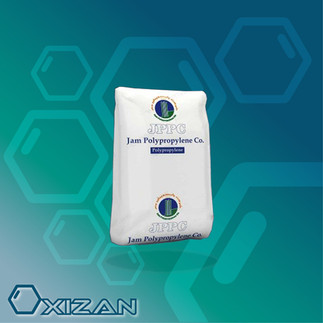Comparing Borouge RJ768M0 and Jampilen RP210G for Transparent Food Packaging
- Mohammad Reza Shoaripour
- May 30, 2024
- 3 min read
Comparing Borouge RJ768M0 and Jampilen RP210G: Which Polypropylene Random Copolymer is Right for Your Needs?
When selecting the right polypropylene random copolymer for transparent food packaging, it's essential to consider both the material's properties and the specific requirements of your application. Two standout options in this category are Borouge RJ768M0 and Jampilen RP210G. Both materials are known for their clarity and mechanical properties, making them suitable for a range of packaging applications. This post will provide a detailed comparison of Borouge RJ768M0 and Jampilen RP210G to help you decide which is best for your needs.
Material Type
Borouge RJ768M0: Polypropylene Random Copolymer
Jampilen RP210G: Polypropylene Random Copolymer
Comparison and Suitability: Both RJ768M0 and RP210G are polypropylene random copolymers, making them inherently suitable for applications requiring transparency and impact resistance. This similarity ensures they can be used interchangeably in many scenarios.
Melt Flow Rate (MFR)
Borouge RJ768M0: 70 g/10min
Jampilen RP210G: 1.8 g/10min
Comparison and Suitability: RJ768M0’s higher MFR indicates faster processing speeds, making it ideal for high-throughput production environments. In contrast, RP210G’s lower MFR suggests slower processing, which can be advantageous for applications requiring higher detail and precision in molding.
Transparency
Borouge RJ768M0: Excellent
Jampilen RP210G: High clarity (Haze: 32%)
Comparison and Suitability: Both materials offer high clarity, essential for transparent packaging. RJ768M0 has a slight edge in transparency, but RP210G’s clarity is still very high, making it suitable for most transparent packaging needs.
Gloss
Borouge RJ768M0: Excellent
Jampilen RP210G: Gloss: 65 (considered high)
Comparison and Suitability: High gloss is critical for aesthetic packaging. Both materials provide excellent gloss levels, with RP210G’s gloss rating of 65 ensuring it meets high aesthetic standards.
Additives
Borouge RJ768M0: Nucleating and De-moulding
Jampilen RP210G: Not specified
Comparison and Suitability: RJ768M0’s specific additives enhance processing by reducing cycle times and improving product quality through better mold release. Although RP210G lacks detailed additive information, its performance in thin-wall applications suggests it has effective processing aids.
Mechanical Properties
Borouge RJ768M0: Good stiffness and impact balance
Jampilen RP210G: Good impact strength and stiffness
Comparison and Suitability: Both materials provide a good balance of stiffness and impact resistance, crucial for packaging that needs to protect contents while maintaining structural integrity. They are both suitable for demanding packaging applications.
Food Contact Approval
Borouge RJ768M0: Yes
Jampilen RP210G: Yes
Comparison and Suitability: Both materials are certified safe for direct food contact, making them reliable choices for food packaging applications.
Applications
Borouge RJ768M0: Transparent food packaging, containers, lids
Jampilen RP210G: High-gloss bottles, food containers
Comparison and Suitability: Both materials are suitable for food packaging, with RP210G being particularly optimized for high-gloss finishes, which can be advantageous for premium packaging applications.
Conclusion for Comparing Borouge RJ768M0 and Jampilen RP210G
we find that Jampilen RP210G, despite its lower MFR, provides a robust alternative with high clarity and gloss, essential for transparent packaging. It is also food contact safe, making it a viable alternative to RJ768M0 for applications such as high-gloss bottles and food containers. The slightly different mechanical and processing properties might require some adjustments in production settings but should meet similar end-user requirements effectively.
If you need further information or another comparison for a different Borouge material, please let me know! This comprehensive analysis should help in making an informed decision for your packaging needs.
Property | Borouge RJ768M0 | Jampilen RP210G | Comparison and Suitability |
Type | Polypropylene Random Copolymer | Polypropylene Random Copolymer | Both are random copolymers, suitable for similar applications. |
Melt Flow Rate (MFR) | 70 g/10min | 1.8 g/10min | Jampilen RP210G has a lower MFR, indicating slower processing speed, but suitable for specific applications requiring higher detail and precision. |
Transparency | Excellent | High clarity (Haze: 32%) | High clarity, although slightly less than RJ768M0, still suitable for transparent packaging. |
Gloss | Excellent | Gloss: 65 (considered high) | High gloss suitable for aesthetic packaging requirements. |
Additives | Nucleating and De-moulding | Not specified | Lacks detailed additive information but its performance in thin-wall applications suggests good processing aids. |
Mechanical Properties | Good stiffness and impact balance | Good impact strength and stiffness | Both materials offer a balance of stiffness and impact resistance suitable for packaging. |
Food Contact Approval | Yes | Yes | Both are certified safe for direct food contact. |








Comments